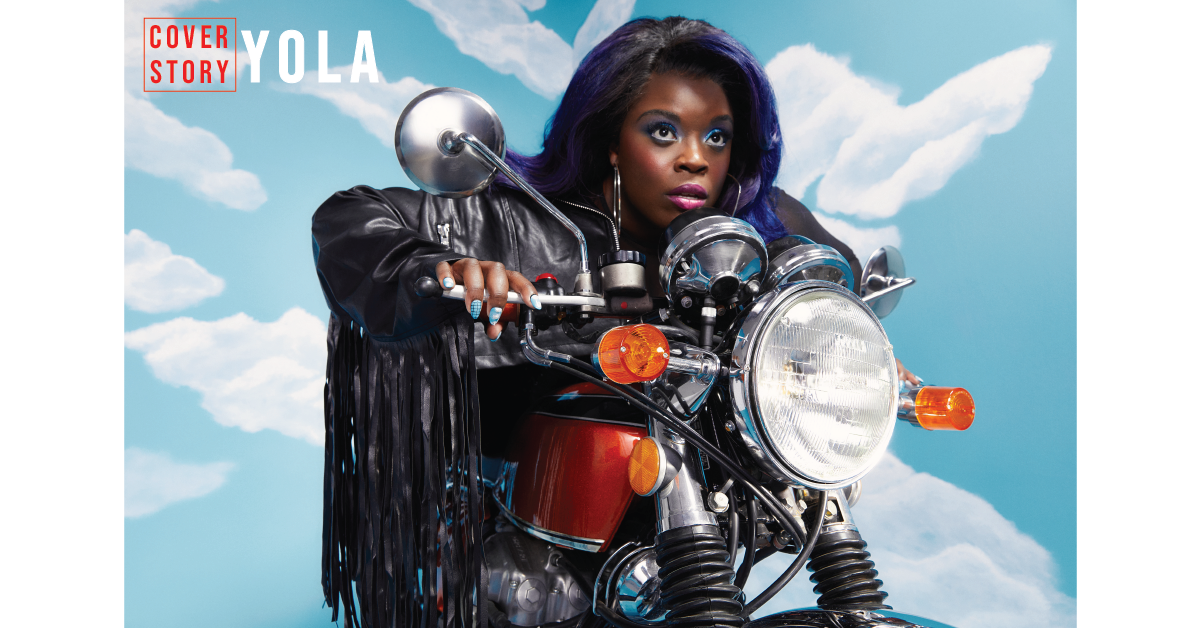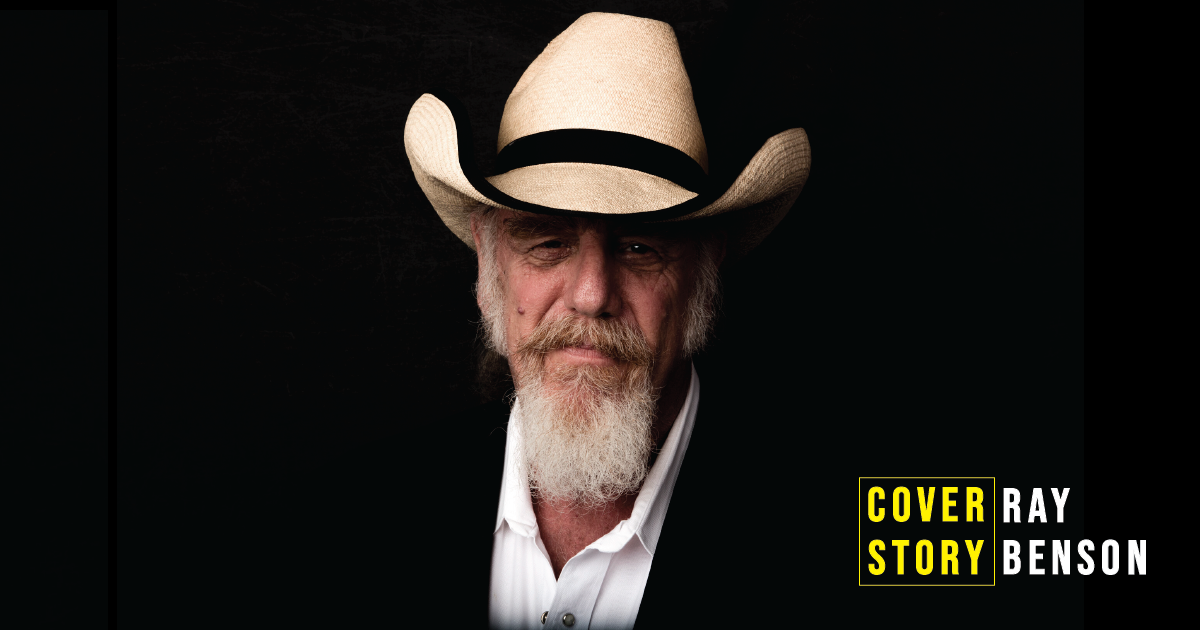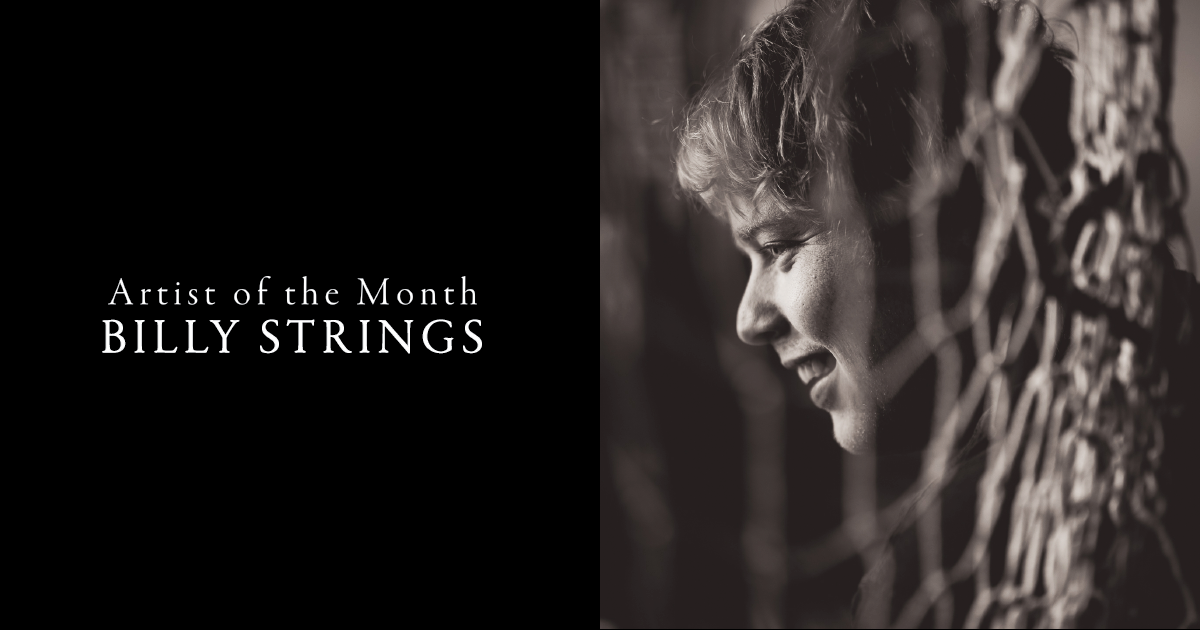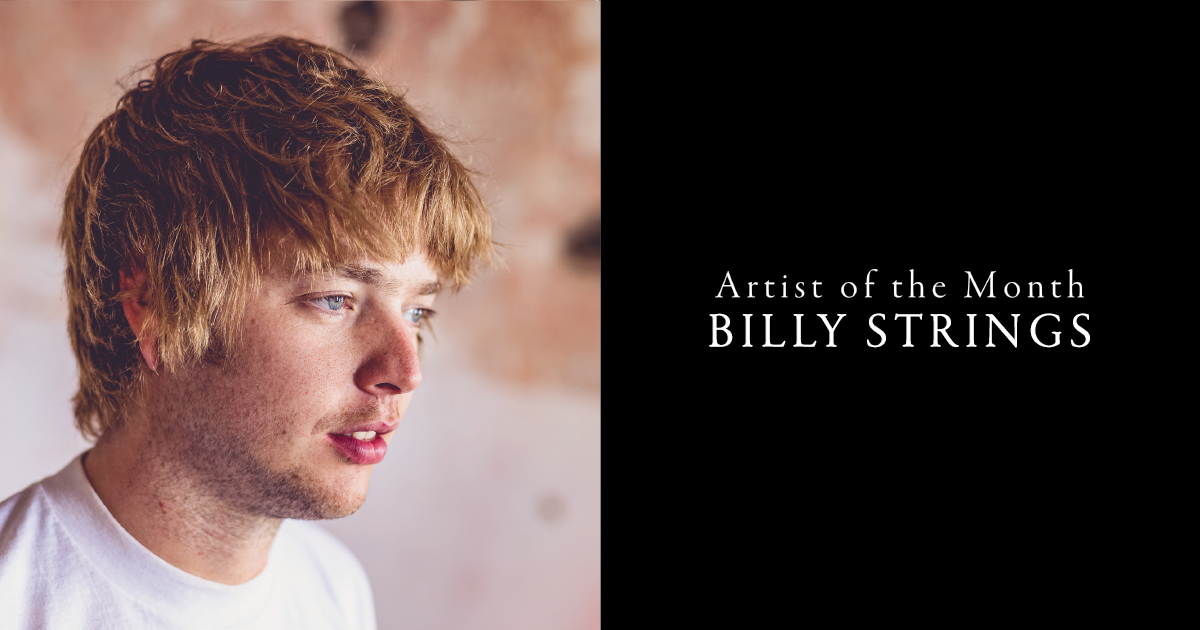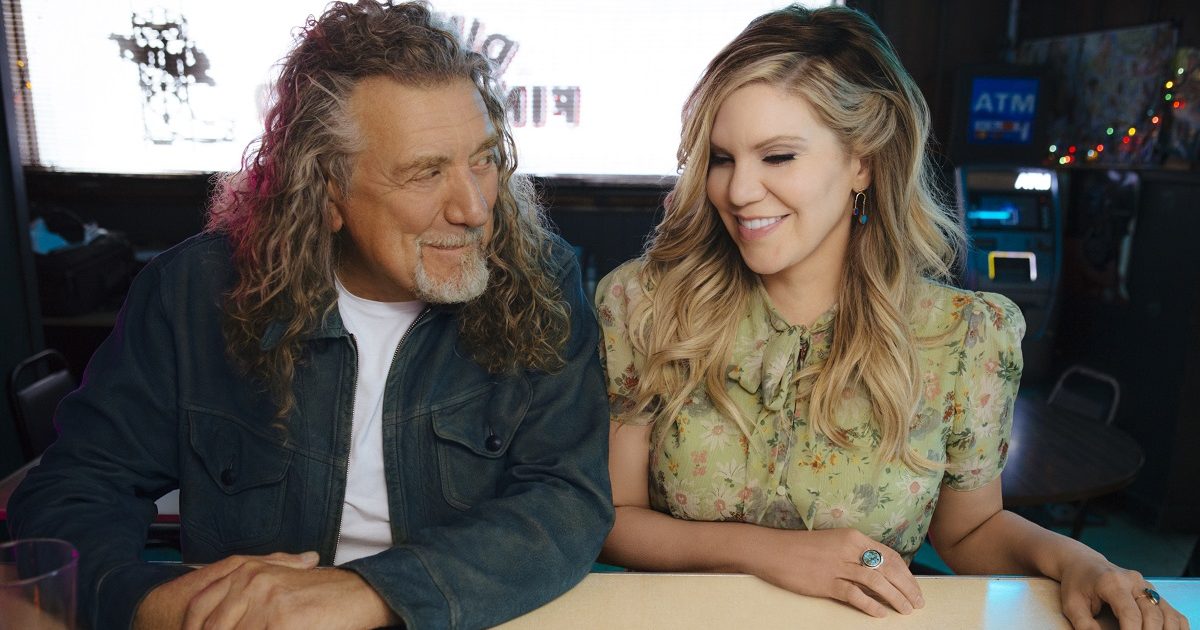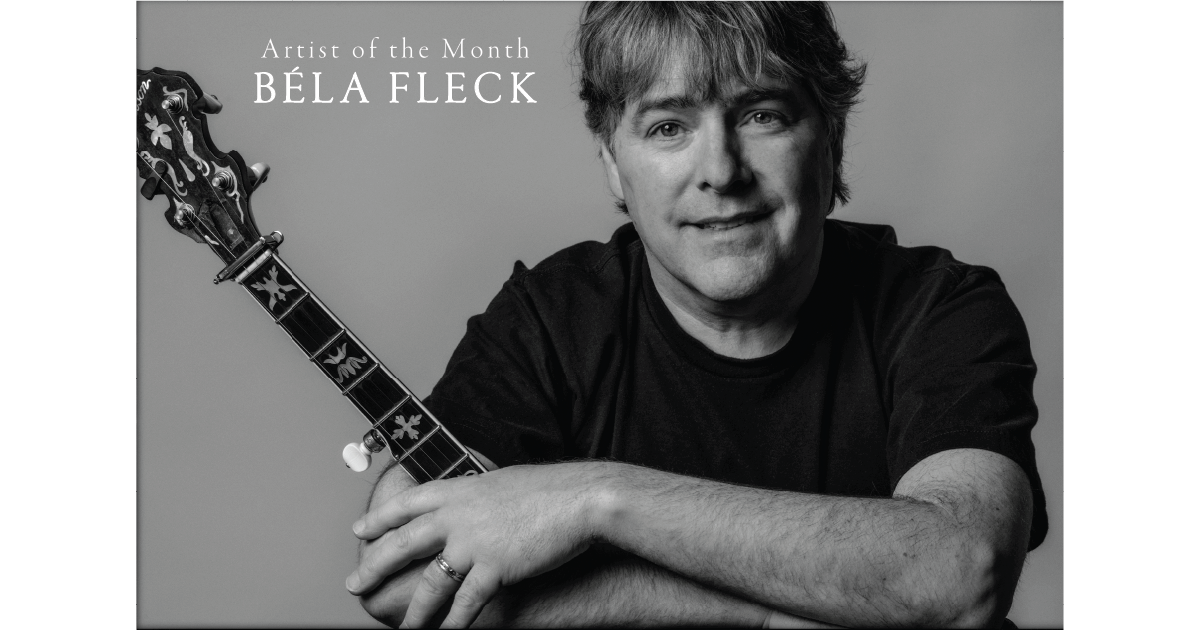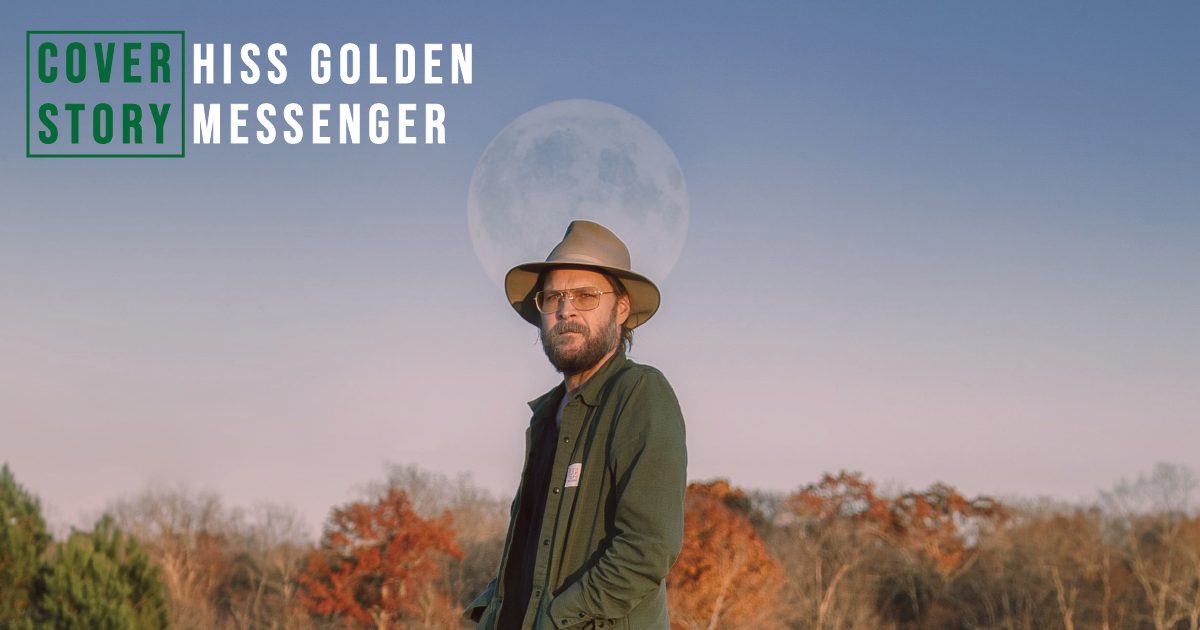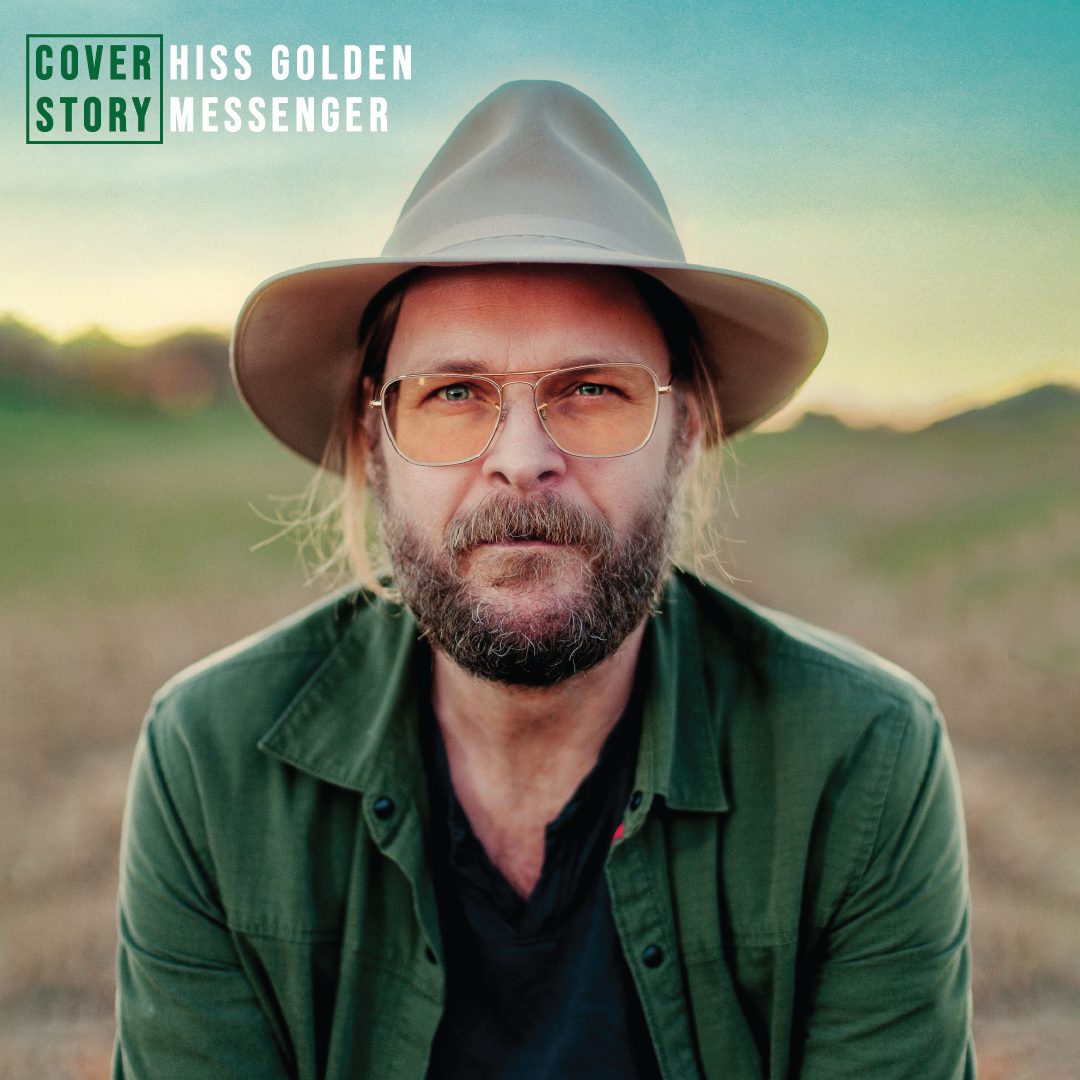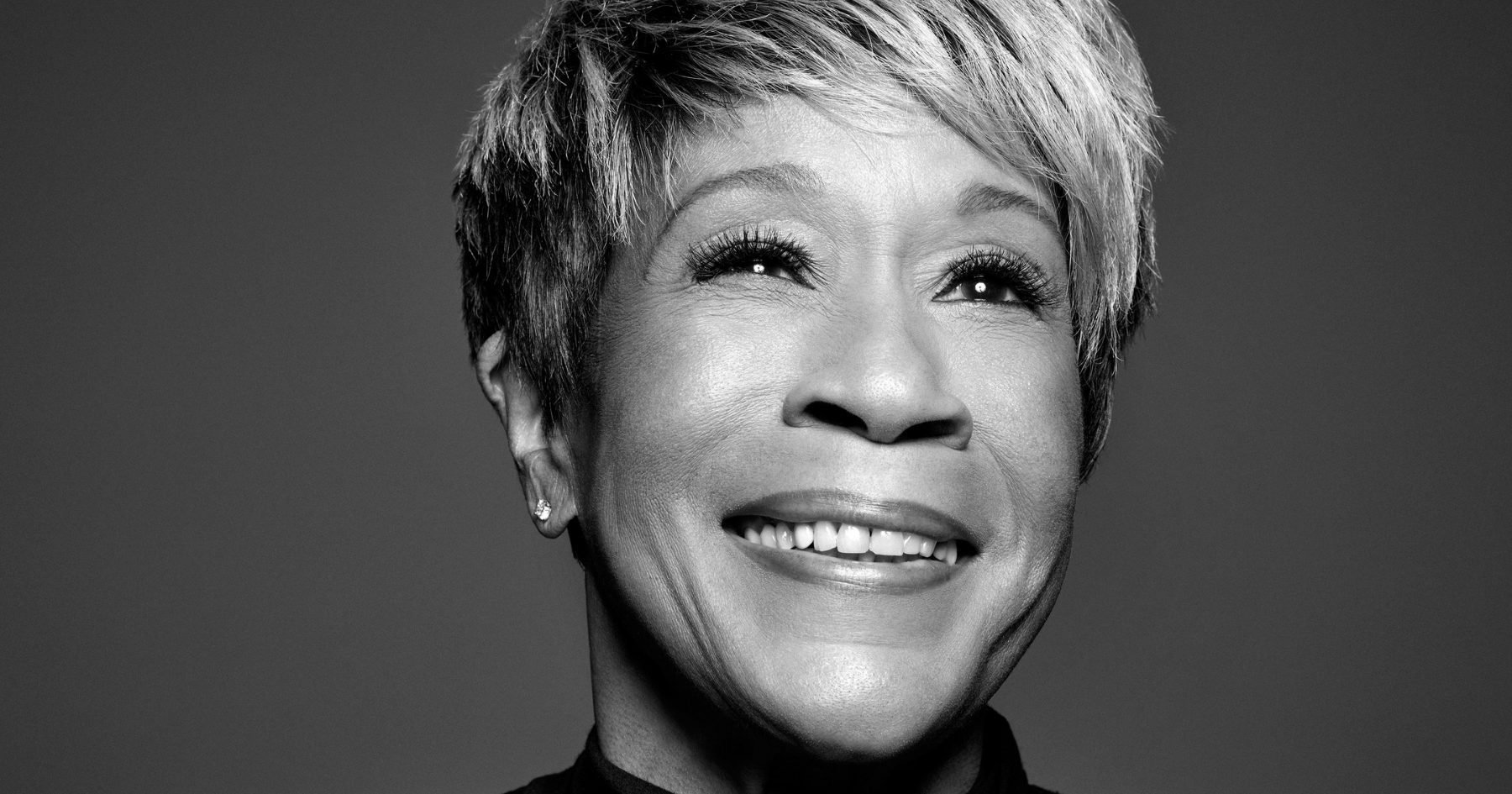Speaking to Yola over Zoom is way more fun than a video call has any right to be. From the time she dials in from the UK, she’s ready to chat. Good thing, because there’s a lot to talk about. About a week earlier, she picked up two Grammy nominations in the American Roots Music category of Best American Roots Song (“Diamond Studded Shoes”) and Best Americana Album (Stand For Myself), and she’s clearly still exhilarated by it.
“It’s very hard for it to even land because it feels really super surreal,” she says. “I don’t know how else to describe it. I’m endlessly grateful to the work that everyone puts in to get me to this point, and honestly, the faith that people have to let me lead at all. I wasn’t always in positions like that, ones that would let me lead.”
She’s speaking of a different kind of leadership style than, say, former British Prime Minister Theresa May, whose sparkly footwear worn during a speech about childhood poverty led to the idea of writing “Diamond Studded Shoes.” Although it does have a feel-good groove, you can’t miss its message of inequality. “And that’s why we gots to fight,” she sings.
To create Stand for Myself, her second album on Nashville-based label Easy Eye Sound, Yola reunited with producer-songwriter Dan Auerbach, and she also pulled in a roster of friends like Brandi Carlile (who sings on “Be My Friend”) and songwriters such as Natalie Hemby (who co-wrote five of the 12 songs) and Aaron Lee Tasjan (a co-writer on “Diamond Studded Shoes”). Still, the defining voice of Stand for Myself is, of course, Yola herself.
BGS: When I was listening to this record again, I was thinking that it does seem like a roots record in the sense that it traces your path from the beginning of your story. And as the album progress, here’s the blossoming at the end. Is that fair to say?
You nailed it. You got it. You felt it. You felt the emotions! It is. I was a bit of a doormat at the beginning and minimizing myself. Joy Oladokun and I were talking about when you grow up as a token Black person in an environment that there aren’t a lot of Black people in, and you’re trying to play guitar and trying to fit in, and you’re not fitting into a trope. … So, we’re in this minimizing, trying-to-fit-in phase. Trying to fit into Eurocentric life as non-Eurocentric people. That’s where we start the album, and then “Dancing Away in Tears” is a bit like a growing out of a relationship, romantically, but obviously it can be socially as well. When I’m singing it, it’s kind of both. It’s like growing out of an environment and just needing to be in another space.
And as you go through the record, “Diamond Studded Shoes” is about the idea of how the macro affects you. You might grow out of a microcosm, but the macro is going to affect how you interact. … Because I’m moving through that, I’m realizing the environment that I’m in and I’m realizing what I want from it, which is essentially connection. I think that’s why by the time we get to “Be My Friend,” you start to realize that I want to connect to people who want to connect to people! (laughs) That’s really what it is! And then I finally do, and as a result, I blossom. As I think humans do. Humans *like* humans, and when they feel seen, they blossom.
That’s really this record. It’s feeling seen, feeling loved, feeling allowed to grow and to do things without someone being like, “Oh, you didn’t serve me. Therefore I’m going to sabotage your existence,” which has been a lot of my life. Or people saying, “Oh, you outgrew me and I don’t like that, so I’m going to sabotage your existence.” It never seems to end, that idea. Or to sabotage people that are trying to help you get somewhere, so it’s not just you. It’s your friend or your squad or whatever. I’m dealing with that. I think “Whatever You Want” is about that, what I like to affectionately call the “bro”-tocracy, a top-down “bro”-tocratic system! (laughs)
This record is called Stand for Myself and not Stand BY Myself. You have surrounded yourself with important people here.
Yes! Just loving people. Big ol’ heart people! Softies! They might be badasses. Brandi and Natalie are some of my besties. Absolute softies of the highest order! That’s really what I’m looking for. I meet all sorts of people, and the people that will stick around in my life, that I will never outgrow, will be those big ol’ softies. Soft badasses! That’s my type!
When you are putting a band together, what qualities are you looking for?
Exactly the same qualities. A badass giant softie who can survive a five-hour brunch with me … and want more! (laughs) For real! Megan [Coleman], the drummer, is one of my best friends of all time. We’re doing Christmas together. She came around for a distance-hang in my yard during lockdown and we were like, “Oh, it’s so hot and disgusting!” We would be spraying water and fanning ourselves and trying to drink gin and tonic, just hanging out! We can spend hours — hours! — talking crap.
You’ve got to live with these people! Literally live in a box with these people. They’ve got to be your favorite people and they better be really amazing at doing their job, because you don’t want to micromanage them the whole time. No one wants to do that, but you want them to be excellent — excellent people, excellent at their job. So, that’s my type. That’s always the type of people I write with. Everything. When I can’t find that, I just wait. I’m patient until I can find that.
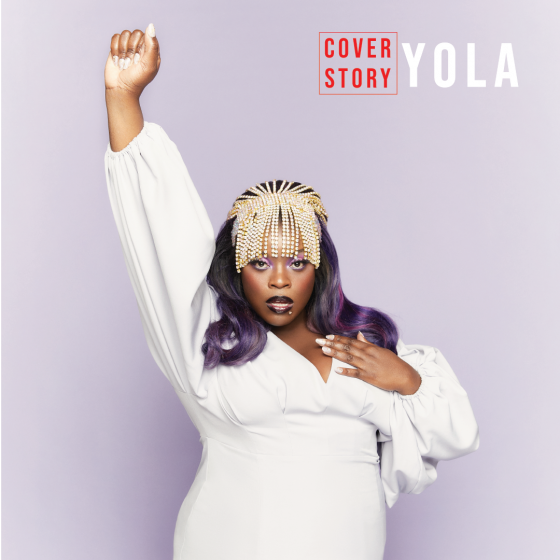
Let’s talk about patience. That seems to be a theme in your life. Can you talk about how patience has factored into your story?
Patience has factored into it. I wasn’t really aware of the time it was taking because I could always see the incremental steps, so I think that’s what makes it tolerable. If you were 19 and someone said, “Hey, it’s going to take this long,” you would say, “WHAT THE FREAK?!” It would be horrific! But you don’t know, and you only see every little step.
For example, from a young age, I was touring with DJ producers. We were opening for James Brown in Australia on this tour that this millionaire (now billionaire) guy would put on, just for his own personal entertainment. It was ridiculous money. … It felt like I was on my way because we were doing 20,000-plus natural amphitheater shows in Melbourne, Brisbane, Sydney, Perth … I felt like I was in it. I was in a band called Bugs in the Attic. They were signed and doing some things. But then it just took so much more time, and I got nodules and lost my voice. I had to quit all my jobs. My body wasn’t happy. I was internalizing all of this dissatisfaction instead of expressing it or dealing with it — or knowing how to deal with it or knowing anyone that would let me speak adjacently about what was on my mind.
I allowed people to clip my wings a little bit because I was of some use to other people. I had useful skill sets, so if I was in service, I was often making people a lot of money. And not myself! But other people. *Loads of money.* And loads of acts did good off the back of me. That was something that started becoming too evident. (laughs) I was like, I can’t have this! You know what? I’m going to have to be the master of my own identity.
You’ve been wanting to do this since you were 4 years old, right?
For real. One hundred percent, yeah, I have. I knew it. What I am doing right now is what my 4-year-old self said I should do. But I kept on getting talked out of doing what my 4-year-old self said, because I couldn’t possibly know at that age, right? Only I totally did! And they were like, “Maybe you should be a backing singer.” I don’t wanna do that. Or “Maybe you should be in a band.” Well, I’ll try it, but I don’t know if I wanna do that either. Or “Maybe you should just write for other people.” That sounds like fun, but I feel like I’ve got something to do myself. Or “Maybe you shouldn’t do it at all.” There were so many different options other than maybe just support you in being the artist. It’s a bit of a way around the houses, you know, but my 4-year-old self was dead-on. I should have just listened to her!
On your first record, Walk Through Fire, you’re pictured on the cover playing your guitar. Has that always been part of your dream, to be an instrumentalist as well as a singer and songwriter?
Oh, I’ve only picked up a guitar comparatively recently to most of my friends. I picked it up in 2014. I was a topliner before that – lyrics and melody, which is much of the song still. But I was very codependent. I was always reacting to people’s chords. It was harder for me to get something out on my own. People around me seemed very hellbent on making sure I couldn’t get things out on my own because if I wasn’t codependent, then all of a sudden they don’t have this topliner who can do all of the stuff. They’d tell me, “You don’t need to pick up the guitar. Don’t worry about it.” It’s really hard to play C, D, and G. I wouldn’t even look into it! (laughs) “I don’t think you have the inclination to play the guitar.” That’s what someone said to me. “It’s going to require a staying power that I don’t think you have, so you know, try something else. Everybody’s got things they’re good at. You’re good at loads of stuff. Just not that.”
Before you even tried it, people told you that you weren’t good at it?
Yeah! But when you’re in your early 20s, you don’t realize how much you don’t know. You think you’re real smart, and you’re officially an adult, and you managed to not die. You’ve put yourself in some sketchy situations and not died! There is something to that. We weren’t activists trying to save the planet. We were drunk! So, yeah, you’re naïve and you’re trusting, I suppose. But the 20s are for that. That’s where you make all of your mistakes. That’s what the whole decade is for: “Whoops! Oh no!” Then you get to 29 and you realize it’s not sustainable. And you have what I like to affectionately term “The 29 Panic.” (laughs) You purge a lot of weirdos and try to get it together.
You’re going into 2022 with these Grammy nominations and you’re going to be in a movie next year, too. And you have more things in store, I’m sure. What are you enjoying the most about this time of your career?
I felt like over the first cycle, we were all learning how to do what we’re now doing. I like to convert people. I converted people on my team from adjacent trades that I knew would equip them exclusively for what I needed them to do. (laughs) So, I’ve got this absolute team of badasses and we’re able to go into situations that look impossible and nail it. We convert situations that are way outside of our price tag. Way outside of all sorts of things! It’s exciting to know that you can handle something and actually have a plan. It may be somewhat ridiculous, and we don’t know how we’re going to do it, and we definitely can’t afford it, but we’re going to get it over the line, you know? It’s that fight!
Photo Credit: Joseph Ross Smith
